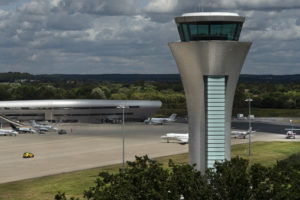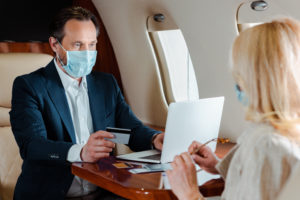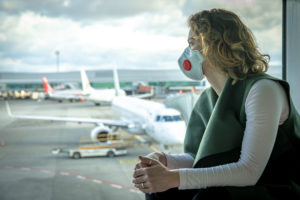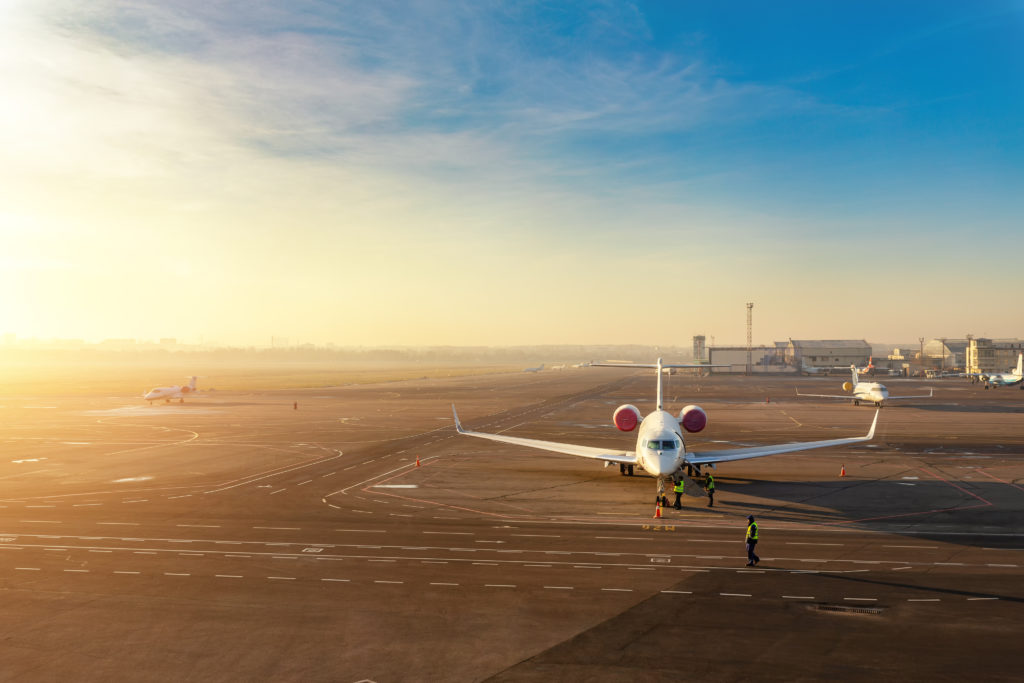Leading figures from the sector discuss business aviation’s ongoing recovery and how companies can take advantage.
Unprecedented, shocking, severe – all words that have been frequently used to describe Covid-19’s impact on aviation since the outbreak effectively grounded the industry in March. Several months on and the shock has subsided to be replaced by talk of the “new normal”, “social distancing” and the world “post-Covid”.
Business aviation activity is undoubtedly recovering from the pandemic across the world. At different times since April, the USA has led the recovery and at other times Europe. The most recent data, published for the first two weeks of July by WingX’s Global Market Tracker, shows a 19% decline compared to the first fortnight of July 2019. A rolling 7 day average for daily activity peaked at just under 16,000 flights, compared to the low-point of under 4,000 in April 2020.
In the USA, business aviation activity is down 20% compared to the same two weeks in July 2019. Europe is currently driving the recovery during the same two weeks, with flights at 82% of their usual July activity. Oceania seems to have normalized at 10% below, and activity out of Asia is “treading water” at 23% below, according to WingX.
Taken as a whole the picture is one of a steady return to normality since April. Athar Husain Khan, secretary general of the European Business Aviation Association says, “The industry in Europe has been very hard hit, but if you extrapolate where we’ve come from, there is a gradual and consistent recovery.
“In the EU about 25% of all aircraft flying are business aviation. That’s the largest market share we’ve ever enjoyed in Europe. The relative importance of business aviation is increasing as we recover. We are also the first to emerge to facilitate the restart, thanks to our flexibility, adaptability and agility, but there is still a long way to go.”
Practical measures

Farnborough Airport in London, UK is typical of the kind of impact the outbreak has had on airports and FBOs. It experienced an 85% drop in movements in April 2020 compared to April 2019. The 311 flights the airport handled in April increased to 605 in May.
The airport has followed medical, clinically driven advice from the relevant authorities about the measures to put in place to deal with Covid-19. This has included providing hand sanitizer throughout its facilities, enhancing cleaning procedures and implementing social distancing measures. Border control was modified into a drive-through process, with passengers asked to stay in their vehicles. Cars for travelers are equipped with plastic shields and regularly sanitized. A remote invoicing process has been introduced for the crew.
Richard Wittels, business development manager at Farnborough Airport says, “We have remained open for business throughout all of the pandemic with the same operating hours. We expect business to continue to return, although I expect we will continue to operate under the new normal scenario.
“The key is being ready to cater for business as it returns. We are in a strong position to do this and are already seeing signs of recovery,” says Wittels confidently.
Opportunities
The majority of flights happening in Europe and the USA are currently domestic, using light and small aircraft. Heavy, intercontinental jets remain grounded while air taxi and charter drive the market. With corporate travel mostly on hold, increase in activity is being driven by demand from leisure customers, particularly in Europe, as would usually be the case during the summer months. Khan says, “Some operators and brokers are also seeing penetration in new markets, from people who haven’t considered business aviation before but now are because we can provide strict and clear health and safety measures on the aircraft and throughout the entire journey.”
Adam Twidell, CEO and founder of online broker firm PrivateFly is finding that business is slowly returning to normal and in some parts of the USA has seen activity return to pre-Covid levels. “The theory is that private aviation will be first out of a recession because people want to avoid airlines, and that is what’s happening,” he says.
PrivateFly has seen the market react on a daily basis as changes to border and travel restrictions are lifted. Like other business aviation companies, it has experienced an increase in new clients. Usually they represent around 25% of bookings, instead so far this year it has been around 65%. “These are people coming into private aviation for the first time”, says Twidell. “They may choose private aviation because they have family members that they want to protect and don’t want to use an airline for health and safety reasons.”
Oliver King, CEO of online charter marketplace Avinode agrees that there is demand from new clients: “But there is a difference in people enquiring about flying private and a flown flight,” he says. “We are yet to join those dots together and that demand isn’t flowing through. People are getting prices, but then there is sticker shock.”
Communicating confidence
Business aviation companies can better serve new clients who may only be accustomed to airline travel, believes Twidell. Company representatives can communicate aspects of traveling by private aircraft that many in the sector take for granted, such as what to expect and what an FBO is. Information about the touchpoints where clients will be more exposed to the risk of Covid-19 infection and preventive measures being taken, such as where and how disinfection is taking place also need to be communicated. “Each trip may take more time to handle, but that’s good for the long term,” he says.
Twidell is confident about business aviation’s prospects, especially when it returns to its core market of serving corporates. He accepts it is likely there will be less business travel until conferences and exhibitions return, but believes that where companies do have budget, they will choose private. “There is a real opportunity to offer our services to a much wider group,” he says. “Businesses are going to face liability challenges with how they fly their employees around the world. Justifying putting employees on an airliner is going to be tough.
“The essential workers and executives that have to fly will look to private aviation,” he says.
“We don’t know what’s around the corner, we can see we will be first out, but long term we are linked to how the economy performs and we need to nurture the new clients we are bringing in,” says Twidell.
Recovery markers
Around the world the simplest and clearest signposts on the road to aviation’s recovery are the lifting of travel restrictions and the opening of borders. Especially at the start of the pandemic, many European countries and US states acted independently of each other. For example, Europe reopened internal borders on June 15 and then on July 1 began opening its external borders to countries where the rate of infection per 100,000 people is lower than its own. But technically the European Commission (EC) can only make recommendations to member nations about travel restrictions. So at the same time as the EC announced restrictions were lifting on July 1, Greece extended a travel ban to Sweden and the UK for two weeks.
The EBAA has called for better coordination on opening up of borders and lifting of travel restrictions. Khan says, “One of our biggest concerns is the lack of coordination. Countries in Europe are issuing their own measures for health, safety and curfews. Some are already opening up their borders and some are hesitant to do so. “These differences are making it difficult to operate. We need a coordinated approach at European level.”
King says, “We’ve seen a few false dawns in anticipation of when border controls are going to be lifted. The pent-up demand is ready to go in Europe.
“We are running at around 80% pre-Covid levels compared to the same period last year and we’re bouncing back quickest. The bad news is that we are 20% short
and that we still have travel restrictions in place all over
the world.
King says, “There is nothing like a removal of restrictions to enable travel, but it needs to come with confidence that it is OK to travel. When that confidence returns will be key – that missing 20% is related to confidence.”
Restoring confidence

The solution to restoring 100% confidence in air travel is a vaccine. Until then strict health and safety measures have to be implemented to stop the spread of the virus.
To its advantage, business aviation’s client base is very discerning. The sector is already accustomed to serving customers who are very particular about hygiene, points out King. “But it’s not just during the flight that is vital now. The whole journey needs to be made safe. The industry needs to work together more, with handovers that ensure bubbles of safety,” he says.
Some companies are already offering to plan and run entire journeys from door-to-door, or door-to-yacht as the case may be, that are “Covid-19 compliant” to strict health and safety standards. These mainly involve organizing hygienic ground transportation to and from FBOs, home and destinations. Seemingly, people increasingly want an expert to organize all aspects of travel, including ground transport and hygiene standards. At the same time travel agents are considering private aviation for many of their clients for the first time.
What remains key though is the trust in the cleaning, hygiene and behavior of the staff. Confidence and reassurance about health and safety is most efficiently and effectively communicated through industry standards and approvals. Although no single standard has appeared as dominant, standard-setting initiatives are happening through trade bodies, large charter operators and
FBO-chains.
Khan says, “The industry is fulfilling the need for standards itself at the moment. Many operators have put programs in place to emphasize health and safety.
“Operators, FBOs and ground handlers have upped their game and are facilitating high-quality services under difficult circumstances. They are already doing the extra to ensure that customers are comfortable with their entire journeys, adapting to the market needs.”
Twidell says, “The sector will probably become more integrated with closer partnerships, especially in the supply chain in the future. For example, we have to be fully confident that car rental companies are taking the hygienic measure necessary, so we have reduced the number of suppliers and are working more closely with them.”
However, Khan believes it remains to be seen if the pandemic will be a catalyst for lasting change for more closer integration within the industry’s supply chains, and that this may become more clear in the next 6-12 months.
Virus legacy

Khan accepts that a return to normality is what the whole sector requires and wants, but sees a large part of his and the EBAA’s role for now as communicating to the rest of society that business aviation can operate safely before normality entirely returns.
Husain says, “The industry as a whole has showed its resolve and resilience. I was happy with the way we reacted.
“At EBAA we have advocated and showed credibly what a great sector this is and how we were able to cope – particularly around safety and health, repatriation and medical supplies.
“In the future, the pandemic will help business aviation become more recognized as an enabler of economic and social cohesion, rather than a perk. We have a role in society, regional development and creating jobs. We are a key player and we have made inroads into that communicating that over the last few months.”





